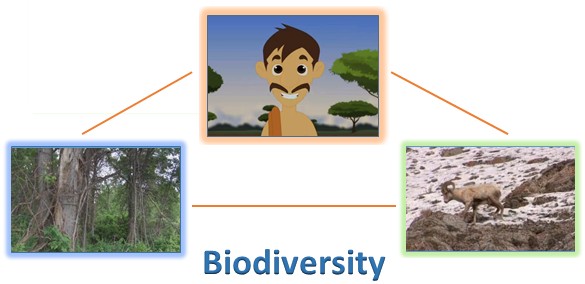Biodiversity
Biodiversity is defined as richness of species (microorganisms, plants and animals) occurring in a given habitat. It is the sum of genes, species and ecosystems.

Causes that pose threat to biodiversity:
1. Degradation and destruction of habitats.
2. Hunting of wild animals and species.
3. Over exploitation of living natural resources.
4. Increase of greenhouse gases and global warming.
Effects on Biodiversity
The biodiversity is defined as "the wealth of life on earth, the millions of plants, animals, and microorganisms, the gene they contain and the intricate ecosystems they build into the living environment". Rainforest are one of the most biologically diverse regions of the world. Over a millions species of plants and animals are known to live in the forests and millions more are not classified. The unique environment of the rainforest allows for such biodiversity existing.
The process of deforestation in various geographical regions is destroying this unique environment. Consequently, many animals and plants that live in the rainforests face the specter of extinction. The extinction of the plants and animals leads to diminished gene pool. The lack of biodiversity and a reduced planetary gene pool could have unforeseen ramifications, some of which could be fatal to the future of humanity.
Average Acceleration Calculator
Average acceleration is the object's change in speed for a specific given time period. ...
When an object falls into the ground due to planet's own gravitational force is known a...
In Mathematics, the permutation can be explained as the arrangement of objects in a particular order. It is an ordered...
A rectangle can be explained as a 4-sided quadrilateral which contains equal opposite sides. In a rectangle
A three sided polygon which has three vertices and three angles is called a triangle. Equilateral triangle...






